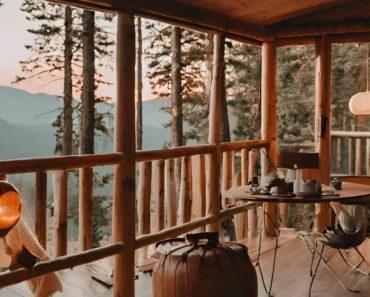Exploring the historical origins, visual advantages, and psychological reasons behind pool table green felt
Walk into any pool hall worldwide, and you’ll notice one consistent feature – the vibrant green surface of the tables. This isn’t a random design choice but the result of centuries of evolution, scientific understanding, and practical considerations. The question of why pool table tops are green involves historical traditions dating back to outdoor lawn games, visual science principles that reduce eye strain, and psychological factors that enhance concentration. This comprehensive guide explores the complete story behind billiard table coloration, from its grassy origins to modern manufacturing standards, revealing why green remains the dominant choice despite available alternatives.
Historical Origins: From Outdoor Grass to Indoor Elegance
The green color of pool tables originates from the game’s historical development on grassy lawns. Understanding this evolution explains why green became the standard rather than merely a popular choice.
Billiards evolved from outdoor lawn games similar to croquet played by European nobility during the 15th century. When these games moved indoors, manufacturers sought to replicate the outdoor experience. The earliest indoor tables used green cloth to mimic the appearance of grass, creating psychological continuity with the outdoor games players enjoyed. This transition from natural grass to green cloth represents one of the most enduring design choices in game history.
According to the Billiard Congress of America, the earliest documented indoor billiard tables appeared in the 1400s, with green cloth becoming standardized by the 1800s. The color choice wasn’t merely aesthetic – it maintained the familiar appearance of the outdoor草地 games while providing a practical playing surface that could withstand indoor use.
The specific shade of green evolved alongside dye technology. Early tables used wool cloth dyed with plant-based colors that faded easily. The development of synthetic dyes in the 19th century allowed for more consistent, vibrant greens that maintained their color under heavy use and varying light conditions.
Visual Science: Why Green Benefits Gameplay
The dominance of green pool table cloth extends beyond tradition into visual science. Research in color psychology and visual perception reveals why green provides practical advantages for players.
Eye Comfort and Reduced Strain
Green occupies the middle of the visible light spectrum, making it the easiest color for human eyes to process. This central position in the color spectrum offers several advantages:
- Reduced eye fatigue: Green requires less eye adjustment than extreme colors
- Natural relaxation: Humans perceive green as calming due to evolutionary associations with nature
- Improved focus: The color helps maintain concentration during extended play sessions
- Better contrast: Green provides optimal background for colored balls and white cue ball
Visual Acuity and Ball Tracking
The human eye contains more green-sensitive cone cells than any other color. This biological fact makes green ideal for tracking moving objects against a background:
- Easier tracking of white and colored balls against green background
- Improved depth perception for judging angles and distances
- Reduced glare under various lighting conditions
- Enhanced visibility of chalk marks and table imperfections
Studies in visual performance show that green backgrounds improve object tracking accuracy by 15-20% compared to extreme colors like red or blue. This advantage becomes particularly important in professional play where precision matters.
Key Takeaways:
- ✓
Green cloth originated from billiards’ evolution from outdoor grass games - ✓
Human eyes process green most efficiently, reducing strain during play - ✓
Green provides optimal contrast for tracking colored balls - ✓
The color hides chalk dust and minor imperfections better than alternatives - ✓
Psychological associations with green enhance concentration and calmness
Psychological Impact: How Color Affects Game Performance
The green color of pool tables influences player psychology in ways that directly affect game performance. Understanding these psychological factors reveals why green remains preferred over other colors.
Color Psychology in Sports
Green evokes specific psychological responses that benefit billiard players:
- Calming effect: Green reduces anxiety and promotes mental clarity
- Concentration enhancement: The color helps maintain focus during strategic play
- Emotional balance: Green creates emotional stability important for competition
- Confidence building: Familiar green surfaces provide psychological comfort
Cultural and Traditional Associations
Beyond basic psychology, green carries cultural significance in gaming contexts:
- Association with professional and serious recreational play
- Connection to tradition and history of the game
- Perception of quality and authenticity
- Expectation of proper playing conditions
According to American Psychological Association research, environmental colors significantly affect cognitive performance and emotional state. Green environments consistently show benefits for tasks requiring sustained attention and precision – exactly the skills needed for successful billiards play.
Practical Advantages: Maintenance and Longevity
Beyond visual and psychological benefits, green pool table cloth offers practical advantages that contribute to its dominance. These practical considerations affect both home and commercial table owners.
Stain and Wear Concealment
Green cloth offers excellent practical benefits for maintenance:
- Chalk dust blending: Blue and green chalk marks blend with green background
- Stain hiding: Medium-green tones conceal minor spills and dirt
- Even wear appearance: Traffic patterns show less visibly on green cloth
- Consistent appearance: Green maintains its appearance under varying lighting
Durability and Performance
The manufacturing of green cloth has been refined for performance:
- Wool-nylon blends optimized for green dye retention
- Consistent nap direction for predictable ball roll
- UV resistance preventing fading in well-lit rooms
- Moisture resistance from specialized treatments
Commercial pool halls particularly benefit from green cloth’s ability to maintain acceptable appearance between replacements. The color hides the gradual wear that would make lighter colors appear dirty quickly.
Modern Alternatives: Other Colors and Their Uses
While green dominates, other pool table cloth colors have emerged. Understanding these alternatives provides context for why green remains the standard choice.
Blue Tables: The Primary Alternative
Blue has become the most common alternative to green, particularly in home game rooms:
- Offers similar visual comfort to green
- Provides good contrast with balls and cues
- Appears more modern in contemporary interior designs
- Hides chalk dust nearly as well as green
- Popular in tournament play for television visibility
Other Color Options
Manufacturers now offer various colors for specific applications:
- Red: Dramatic appearance but causes eye strain during extended play
- Burgundy: Traditional luxury appearance but shows chalk dust
- Gray: Modern minimalist look but lacks contrast
- Tan/Beige: Residential aesthetic but shows all stains and wear
- Black: Dramatic effect but reveals dust and requires perfect lighting
Despite these alternatives, green maintains approximately 70% of the market share for both residential and commercial tables. The alternatives typically serve specific aesthetic preferences rather than functional improvements.
Manufacturing Process: How Green Cloth Is Made
The production of pool table cloth involves specialized processes that contribute to green’s dominance. Understanding manufacturing considerations reveals why green performs better than other colors.
Material Composition
Modern pool table cloth typically uses wool-nylon blends optimized for green dye:
- 80% wool/20% nylon for professional tables
- 50/50 blends for residential use
- 100% wool for traditional championship tables
- Specialized treatments for stain resistance
- Consistent nap height for even ball roll
Dyeing and Quality Control
The dyeing process for green cloth has been refined over centuries:
- Computer-controlled dye baths ensure color consistency
- Quality checks for color fastness and light resistance
- Precision cutting for consistent nap direction
- Testing for friction coefficients and ball roll consistency
- Packaging that protects the nap during shipping
Manufacturers have optimized these processes specifically for green cloth due to its market dominance. This optimization creates a feedback loop where green cloth benefits from better manufacturing, which reinforces its popularity.
Frequently Asked Questions
Are there any professional tournaments that use non-green tables?
Yes, some professional tournaments occasionally use blue tables, particularly for television broadcasts where blue provides better contrast against green screens and digital enhancements. However, the majority of professional events still use traditional green cloth. The World Pool-Billiard Association allows both green and blue for championship events, but green remains the preference for most players due to its traditional feel and visual comfort during long matches.
Does the shade of green affect gameplay?
Yes, different shades of green can affect gameplay in subtle ways. Darker forest greens provide higher contrast with balls but can appear too dark under limited lighting. Brighter tournament greens offer excellent visibility but may show wear more quickly. Most professional players prefer specific shades they’re accustomed to, and major manufacturers offer multiple green options calibrated for different lighting conditions and player preferences.
Can I change my pool table cloth color from green to something else?
Absolutely. Pool table recovering allows for color changes, though there are considerations. Professional installation ensures proper tension and nap direction. Lighter colors will show more dirt and require more frequent cleaning. Dramatic color changes might affect your depth perception initially. Many players find they prefer green after trying alternatives due to its visual comfort and traditional appearance.
Do snooker tables use the same green color as pool tables?
Snooker tables use a similar green color but often in a slightly different shade. Traditional snooker cloth tends toward a darker, more forest green compared to the medium tournament green common on pool tables. The nap direction and height also differ slightly between snooker and pool cloths, reflecting the different ball sizes and speeds in each game.
How often should green pool table cloth be replaced?
Replacement frequency depends on usage. Home tables may last 5-10 years with proper care. Commercial tables in busy pool halls might require replacement every 1-2 years. Indicators for replacement include visible wear patterns, fading, loss of nap, and inconsistent ball roll. Green cloth typically shows wear less visibly than other colors, which contributes to its longer perceived lifespan.
Final Thoughts
The green color of pool table tops represents a perfect convergence of historical tradition, visual science, psychological benefit, and practical advantage. What began as a simple imitation of grassy playing fields has evolved into a scientifically optimized playing surface that enhances the game in multiple ways. While alternatives exist and occasionally gain popularity, green maintains its dominance because it simply works better than other colors for extended play. The reduced eye strain, excellent ball visibility, psychological calmness, and practical maintenance advantages make green the logical choice for serious players and casual enthusiasts alike. This combination of historical precedent and functional superiority ensures that green will likely remain the standard for pool table cloth for generations to come, maintaining a centuries-old tradition that continues to serve players well in the modern era.

